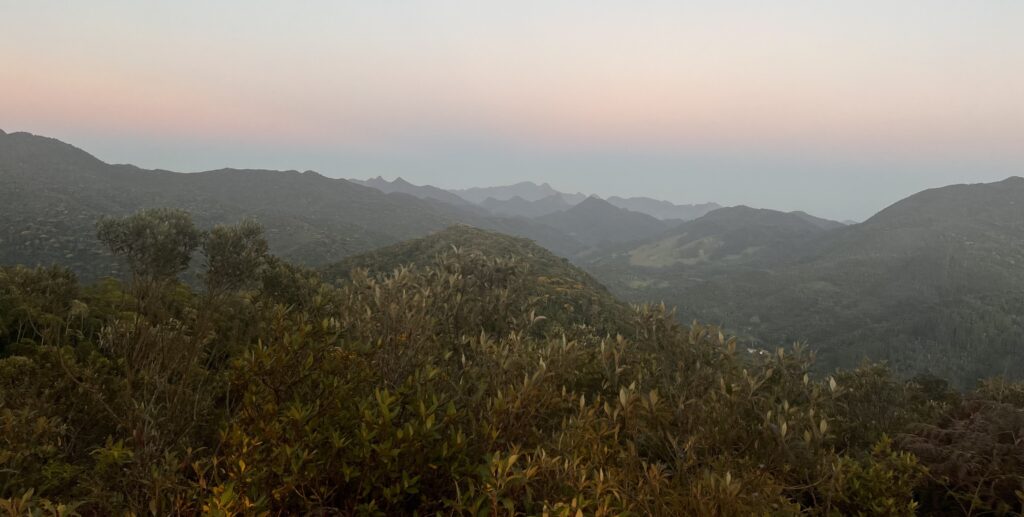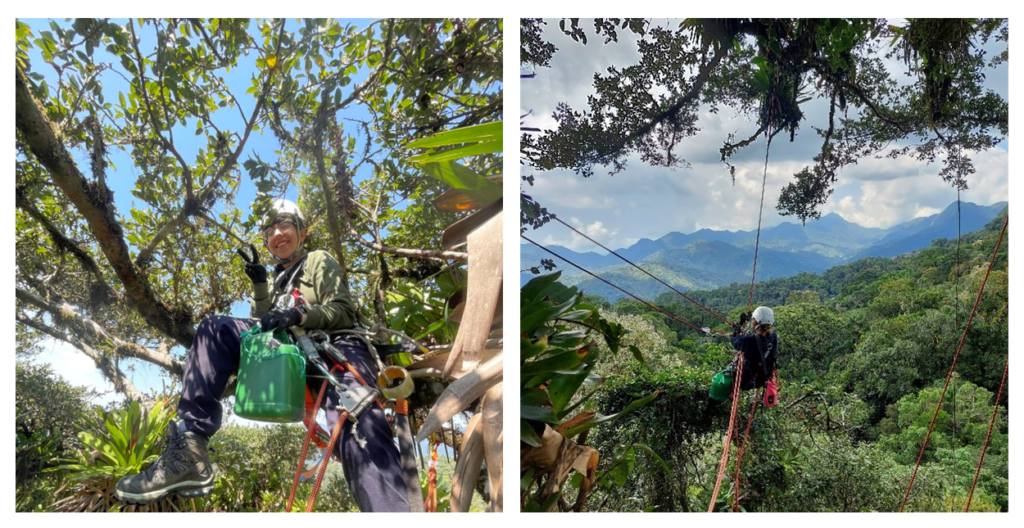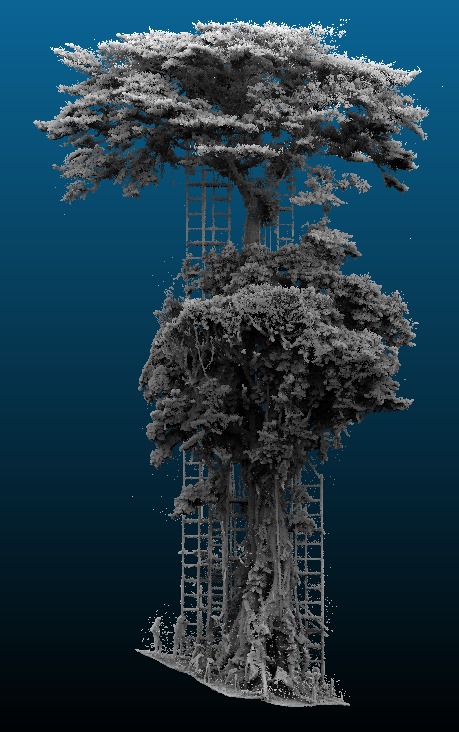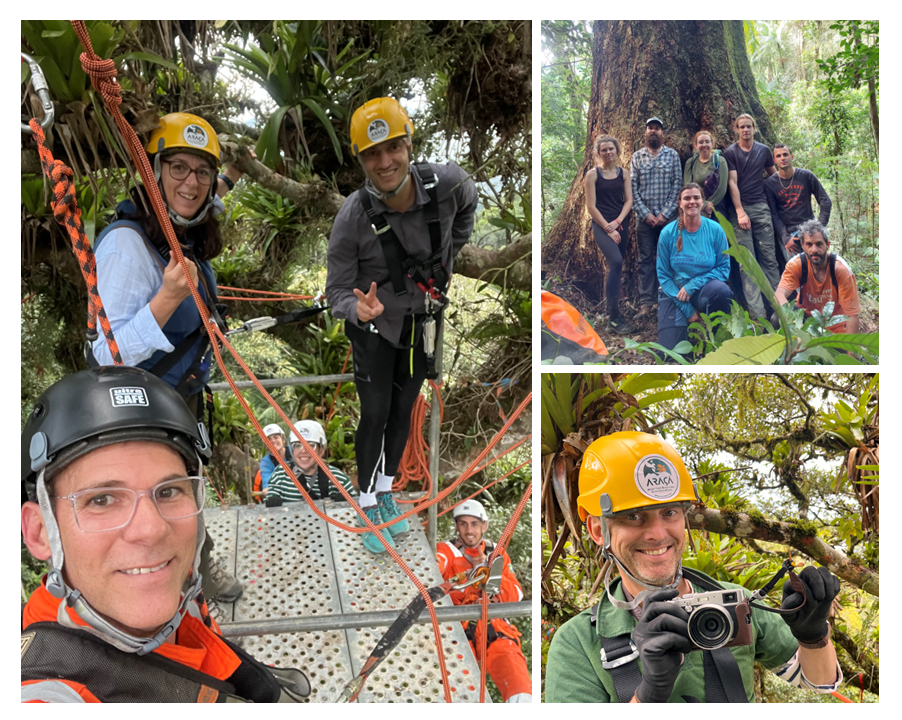I'm Olivia Fitzpatrick, research assistant for the Antonelli Lab at the Royal Botanic Gardens, Kew. In September 2023, I travelled to RPPN Alto da Figueira, the Antonelli Foundations' private reserve in Brazil’s Atlantic rainforest, to complete fieldwork for a new project. The focus of my work was an old-growth fig tree, Ficus cestrifolia. The tree is around 30m tall and even from the ground you can tell that it hosts many different species, which begs the question: How many and which species are associated with this tree?

The Brazilian Atlantic Rainforest is one of the most biodiverse places on Earth, but we currently lack fine-scale environmental and ecological data, and what we do have is very biased, with the majority of our existing information centring around birds, bromeliads and orchids. Less than 10% of the original forest area remains and what does remain is highly fragmented. To help guide conservation of this area, it is crucial we understand what can actually be found in this rainforest.
To try and begin to fill this knowledge gap, we planned a pilot study that would assess the full associated plant and fungal macrobiota and microbiome diversity of a single tree, with a view to collaborating and expand the project to cover animal diversity, comparisons to other trees and surveying wider forests plots in the future. The study forms part of the ARAÇÁ project – the Atlantic Forest Research And Conservation Alliance (www.araca-project.org).
With the intention of assessing the fig tree’s diversity using molecular techniques to enable a fast and comprehensive analysis, I collected epiphytes, bark epiphytes, bark and leaf samples for DNA extraction from various areas of the tree. We aimed to sample representatives of all the species on the tree without oversampling and having a negative impact.

Sampling started along the trunk of the tree and continued into the canopy, with samples collected in all of the Johansson zones for four branches, which were selected in each cardinal direction. To be able to access all areas of the tree, four scaffold towers were erected around the tree’s trunk, and from this scaffolding I was able to access the tree's canopy via ropes – this technique worked better than I could have imagined. Doing this I was able to walk along branches in the canopy starting from the trunk and reaching the very tips of branches, which was truly a magical experience. Seeing the forest from the very top of the tree and looking out at the valley is an experience I will never forget!
I was in Brazil from September to December, and while I was there Alto da Figueira was host to many amazing guests, including Prof. Kim Calders from Ghent university, who with his team completed a Lidar scan of the tree. This helped us to realise that the Ficus cestrifolia was in fact two trees – the fig had used a Sloanea garckeana tree for support, slowly enveloping it but with the canopies of both trees still emerging.

Observing the tree’s complete structure from the ground or within the tree was challenging due to the dense canopy, and so what appears very clearly as two canopies in the lidar scan is actually quite hard to spot in real life. Armed with this new information, we were able to ensure we also sampled within the canopy of the host tree and should hopefully have some very cool comparisons of the biodiversity of both canopies.
Other visitors to the tree included Rowan Hooper, the podcast editor and host of the New Scientist weekly podcast, who came to the field centre for research for his new book about symbiosis. While he was in Brazil, we were able to record for his podcast while at the top of the tree! We were also very lucky to be visited by Dr Sarah Darwin, a researcher at the Museum Für Naturkunde in Berlin and Charles Darwin’ great-great-granddaughter, who conquered her fear of heights to see the Atlantic Rainforest from the top of the canopy.

My time in Brazil was the most amazing experience, and seeing the Atlantic rainforest in person was a dream – even on windy days, when being in the tree felt like you were on a boat in a storm, it was hard to ignore the beauty of the landscape. I am now processing the samples back in the UK and looking forward to beginning to answer some of the questions that started this project.
Check out this short video, filmed and produced by Thomas Berg of ARAÇÁ, to find out more and join me in the canopy!
- Olivia -
_______________________________________________________________________________________________________________
The fig tree project is run by the Royal Botanic Gardens, Kew, and hosted by the Antonelli Foundations for Biodiversity Research, in partnership with the University of Campinas in Brazil, Bangor University in Wales, UK, and the Royal Belgian Institute of Natural Sciences and Ghent University in Belgium, among others. It is primarily funded by RBG Kew Development.
